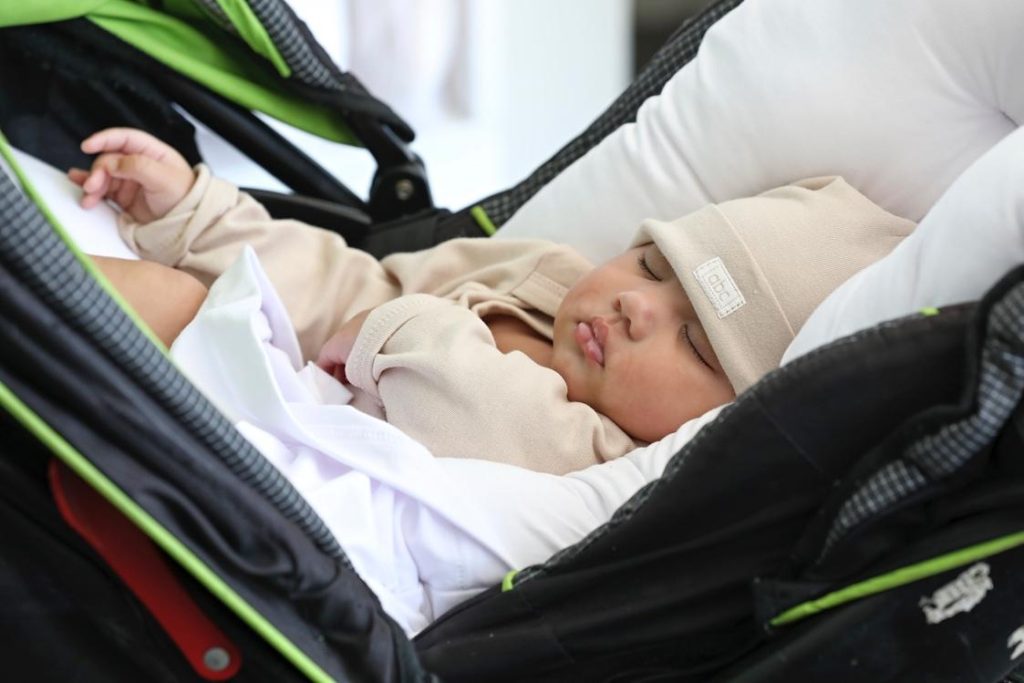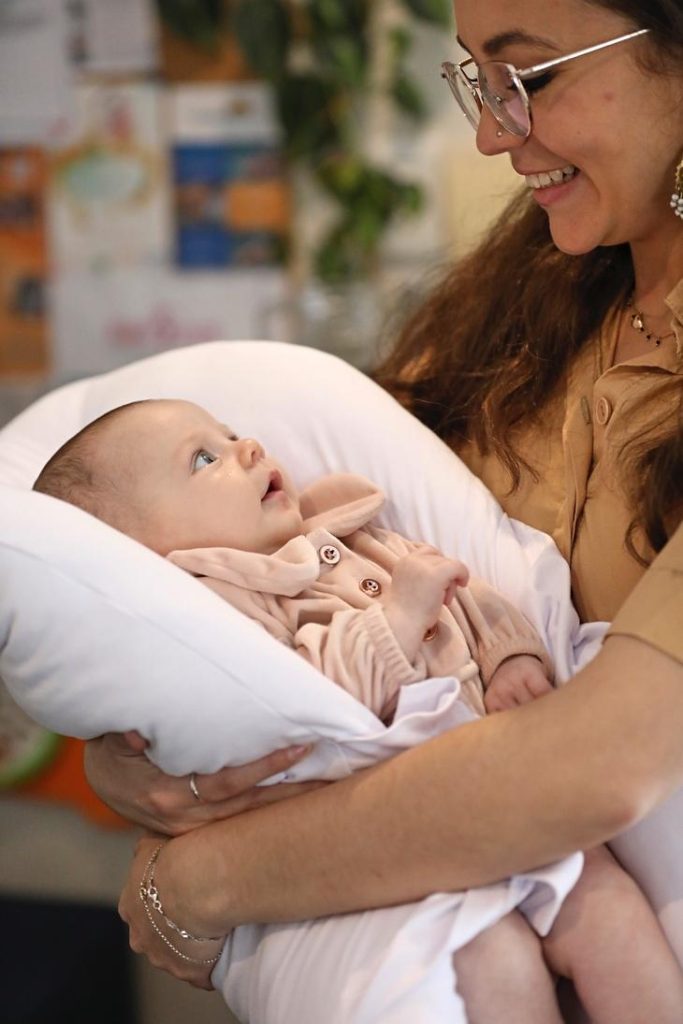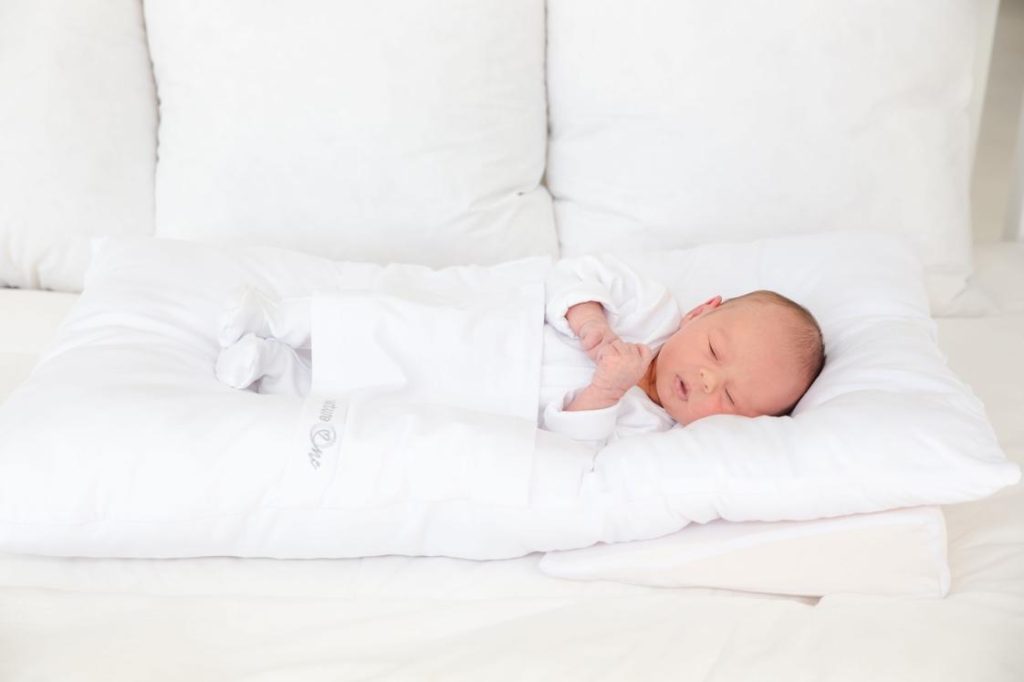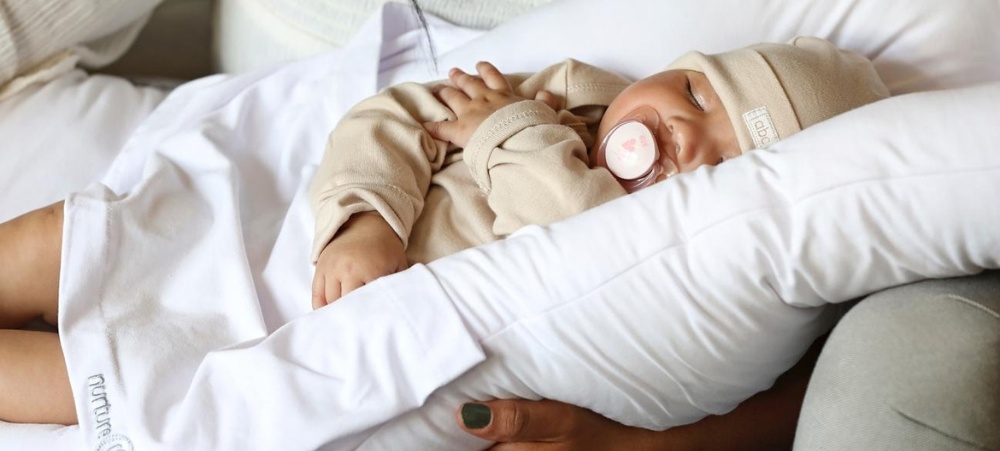Sleep deprivation is a common phenomenon in parents with newborns. Sleep is the one factor that keeps you sane, alert and calm throughout the day. Lack of sleep has a negative influence on your physical, emotional, and social well-being. Fatigued babies are also affected in the same way and are often too tired to learn the necessary positive coping mechanisms needed to deal with stress.
Understanding the Fourth Trimester:
The fourth trimester is the 12-week period immediately after you have had your baby. The human new-born is very immature when compared to any other new-born in the animal kingdom. It is a time of great physical and emotional change as your baby adjusts to being outside the womb, and you adjust to your new life as a parent. New-borns only truly “become babies” after about 3 months. It is thus very important, during the fourth trimester, to help babies make a gentle adjustment to their new world outside the womb. The sleep environment for your new-born baby should mimic the womb environment. In other words, your environment for your new born should promote a sense of calmness, quiet, and can also mimic the rhythmic movement of the foetus in utero without too many bright lights and distractions. This can make a huge difference to how the baby sleeps, feels, and reacts to everyday events and stimuli. The nurtureOne™ nesting cushion was designed and developed to meet these needs. The nurtureOne™ nesting cushion assists with a snug position for sleeping (like the experience they have in utero) which also encourages calm and relaxation.
The following tips may be useful to help your baby sleep well:
Sleep Cycles:
Understanding your new born sleep cycle can assist you in having a clearer appreciation of their behaviour. During the light sleep cycle, your baby will tend to wake easily from noise, while during the deep sleep cycle they will sleep heavily. Be aware of babies’ sleep cycles; 45-50 minutes from drowsy to light and into deep sleep. The period of deep sleep is vital for the recuperation of their bodies and their growth and development. By providing the necessary boundaries like the nurtureOne™ nesting cushion does, this can keep your baby contained and secure, and therefore optimise their sleep cycles and help link the cycles during night time.
Boundaries:
Creating boundaries for your new-born gives them a sense of security similar to the womb environment. The nurtureOne™ nesting cushion creates such boundaries (mimicking the fourth trimester). Swaddling can also meet these needs. However, muscle development occurs through movement and so it is recommended to swaddle with this in mind. Some babies prefer not to be swaddled while others want to be. If your baby needs to be swaddled, swaddle them in a stretchy cotton blanket before you put them down to sleep. This will keep them snug and contained and prevent them from waking due to their body’s own jerking movements when falling into the deep sleep cycle. When swaddling, consider bringing your baby’s hands together ensuring they can self-soothe by sucking on their fingers (this is also the beginning of eye-hand coordination). If your baby does not want to be swaddled (as not all babies do), then a weighted soother will assist. nurtureOne™ has a hypo-allergic, odourless weighted soother which will encourage your baby to settle and drift off to sleep.
Consistency:
Keep your baby’s sleep environment or space consistent. In this regard, the nurtureOne™ nest can become the most conducive tool. The cushion stays consistent, whether they are at a day-care facility or at home, or anywhere on an outing.

Self-Regulation:
Encourage self-regulating sleep by offering a sleep soother. This will limit separation anxiety from the mother or primary caregiver, which occurs usually between 4 and 6 months. The sleep soother in turn encourages independent sleep whether co-sleeping or sleeping in their crib. Examples of sleep soothers include a dummy/pacifier, blanket, or even a nurtureOne™ nesting cushion as it becomes part of the sleep routine. If your baby needs more assistance with self-regulation and calming, then a nurtureOne™ weighted soother can be beneficial.
Feeding & Sleep Preparation:
Make sure your baby is not hungry before they go to sleep. Also, ensure that their nappy does not need changing. In other words, ensure their basic needs are met. It is recommended that the environment where your baby sleeps is dark (use block-out curtains). Keep any other form of stimulation away from your baby’s sleep environment (such as a mobile over the sleeping area – rather have this over the changing table). Ensure that your baby is not too hot or too cold.
Bath and Massage:
At night, bath your baby close to bedtime and massage their whole body with soothing baby oil. The heat of the bath and the deep pressure of the massage have a calming effect on babies and make them drowsy, which will help them to fall asleep quicker.
Movement:
During your baby’s wake cycles make sure that they get enough movement. Activities like going for a walk in the pram or in a kangaroo pouch or sling, and communicating with them while in the upright position. Remember to support your baby’s head if it still appears slightly floppy.
Holding your baby while humming softly and rocking them rhythmically will encourage sleep (mimicking the fourth trimester). If you are putting your baby down, remember to put their bottom down first, then their head, otherwise they may wake from an innate reflex. This is part of the calming reflex and mimics the movement your baby experienced in utero. Try the above while using the nurtureOne™ nest – put your baby to sleep in the nest and then put them down when asleep, bottom first. All transfers to the crib or bed become easier as your baby remains asleep in the nurtureOne™ nest while transferring them!

Sleep Routine:
Try to establish a sleep routine for your baby from early on. This will prevent an overload of stimulation which can affect your baby’s sleep. Introducing a sleep association such as the nurtureOne™ nesting cushion assists with establishing appropriate sleeping routines. It is important to be realistic, adopt a flexible approach, and accept that you will have “bad days” from time to time.
Raise the Head:
Reflux can contribute to a lack of sleep in babies and it is advisable to consult a medical practitioner in this regard. To assist your baby, try to keep them in a more upright position during feeding and after feeds. The nesting cushion can play a valuable role in this regard, as it can be used during feeds to keep your baby in a relaxed state while drinking, and after the feed, the cushion can be raised to a more upright position while still holding them, or placing them in the cushion in a position that allows for easy digestion. When your baby is comfortable and you can put them down, the nurtureOne™ wedge, specially designed to complement the nesting cushion, can be used to raise the head-space of the cushion.

The nurtureOne™ nesting cushion was designed, and is endorsed by, medical practitioners, to meet the sensory needs of the premature baby and is used in intensive care units (ICUs) country-wide. Full-term babies (especially in their fourth trimester) also benefit from the nurtureOne™ nesting cushion. The cushion can be used by all new-borns until they outgrow it, which varies depending on the size of the baby, but in general is usually around seven months.
The specially designed nurtureOne™ nesting cushions provide the same sense of calm and security that babies felt in the womb, assisting in sustaining good sleeping patterns.
Jen Spiro – B.Sc OT (University of Cape Town), B.Soc.Sc Social Work (University of Cape Town)
Jen′s passion lies in meeting the needs of babies and their caregivers. She has brought this enthusiasm to her work in paediatrics for over 20 years. After qualifying with both social work and occupational therapy degrees, she specialised in working with newborn babies and children with learning difficulties. She has worked in community-based well-baby clinics, provided occupational therapy intervention for children with learning difficulties, and run social skills groups with children and adolescents. She has also worked in private practice. Her postgraduate studies have led to a holistic philosophy in which she integrates various approaches to provide children with appropriate sensory integration, neurodevelopment and emotional and or cognitive intervention. Being a mother of two, together with her work and studies, has given her a wealth of insight into the emotional, physical, and developmental needs of babies. Jen believes that providing the correct environment for your baby is of utmost importance.
For more information, please visit https://nurtureone.co.za
https://www.facebook.com/nurtureonenesting/
https://www.instagram.com/nurtureOneNesting/
By Jen Spiro – an occupational therapist and social worker, and co-founder of the nurtureOne™ nesting cushion
The specially designed nurtureOne™ nesting cushions provide the same sense of calm and security that babies felt in the womb, assisting in sustaining good sleeping patterns.
- What is Plagiocephaly? - January 14, 2025
- Understanding Reflux in Babies - December 2, 2024
- Why are newborns soothed by being contained and touched? - November 5, 2024





